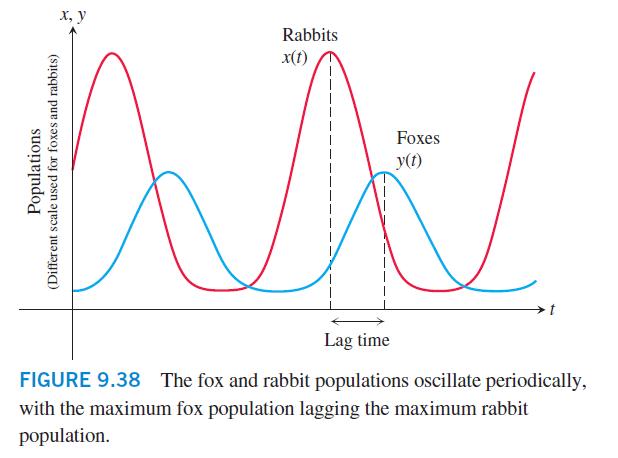Along each trajectory, both the rabbit and fox populations fluctuate between their maximum and minimum levels. The
Question:
Along each trajectory, both the rabbit and fox populations fluctuate between their maximum and minimum levels. The maximum and minimum levels for the rabbit population occur where the trajectory intersects the horizontal line y = a/b. For the fox population, they occur where the trajectory intersects the vertical line x = c/d. When the rabbit population is at its maximum, the fox population is below its maximum value. As the rabbit population declines from this point in time, we move counterclockwise around the trajectory, and the fox population grows until it reaches its maximum value. At this point the rabbit population has declined to x = c/d and is no longer at its peak value. We see that the fox population reaches its maximum value at a later time than the rabbits. The predator population lags behind that of the prey in achieving its maximum values. This lag effect is shown in Figure 9.38, which graphs both x(t) and y(t).
At some time during a trajectory cycle, a wolf invades the rabbitfox territory, eats some rabbits, and then leaves. Does this mean that the fox population will from then on have a lower maximum value? Explain your answer.
Step by Step Answer:

Thomas Calculus Early Transcendentals
ISBN: 9780321884077
13th Edition
Authors: Joel R Hass, Christopher E Heil, Maurice D Weir





